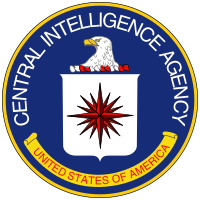
Photo from wikipedia
Background DBA/1 mouse (H2q type) CIA model as a mature model of rheumatoid arthritis is widely used in pharmacology and pharmacodynamics research[1]. Chinese medicine treatment of rheumatoid arthritis has accumulated… Click to show full abstract
Background DBA/1 mouse (H2q type) CIA model as a mature model of rheumatoid arthritis is widely used in pharmacology and pharmacodynamics research[1]. Chinese medicine treatment of rheumatoid arthritis has accumulated rich experience. The study of Tripterygium glycosides is quite representative, and it has been widely used in the past 30 years. Some Clinical studies showed that tripterygium glycosides treatment of rheumatoid arthritis had good effect[2]. ChuanTengTongBi decoction is also the effective prescription commonly used for the treatment of rheumatoid arthritis. Objectives To investigate the pathological damage degree of DBA/1 mouse CIA model and the effects of different doses of ChuanTengTongBi decoction on the CIA model mice. Methods The mice were divided into normal group, model group, leflunomide group (3.11mg/kg/d), low-dose of ChuanTengTongBi group (0.44g/ml/d), medium-dose group (0.88g/ml/d) and high-dose group (1.76g/ml/d). Results The arthritis index (AI) was evaluated every week to determine whether the model was successful. We defined AI score ≥4 as successful model (AI score standard:0, No swelling;1, Slight redness and swelling;2, Moderate redness and swelling of ankle; 3, Severe redness and swelling of the entire paw;4, Maximally inflamed limb with involvement of multiple joints [3]). Day 28–42, hind foot redness and swelling of the mouse continued to develop and extended to the forefoot. Compared with the normal group, incidence of CIA model group reached 100%. Day 49, compared with the model group by joint scores, medium-dose group, high-dose group and leflunomide group have Significant differences on CIA model (p<0.01). Compared with the Leflunomide group, low-dose group, medium-dose group and high-dose group have no obvious difference (p>0.05). Compared with the low-dose group, medium-dose group and high-dose group have no difference (p>0.05).Table 1. Joint scores (mean ± SD) groups 28d 35d 42d 49d a o o o o b 8.05±1.62 12.40±2.10 14.68±1.77 12.33±1.68 c 8.66±0.14 11.99±0.23 12.10±0.23** 11.30±0.22** d 7.90±0.34 11.40±0.18 12.80±0.20** 12.00±0.13 e 7.40±0.23 10.90±0.13* 10.40±0.44** 10.60±0.36** f 8.80±0.24 10.60±0.30* 11.30±0.22** 8.80±0.55** a. Blank group. b. Model group. c. Leflunomide group. d. Low-dose group. e. Medium-dose group. f. High-dose group. Compared with the model group, *p<0.05, **p<0.01. Conclusions CIA model has a high morbidity, long duration, macroscopic pathological manifestation and irreversible ankle joint deformation, which is consistent with the progress of human RA disease and pathological damage. Medium-dose of ChuanTengTongBi decoction, high-dose and leflunomide group had inhibitory effect on the progress of arthritis, and the effect of high-dose was better than that of leflunomide group. References Brand, D.D. Rodent models of rheumatoid arthritis. Comp. Med. 55, 114–122(2005). Shen S, Yang Z, Yiyang H U, et al. The Effect of Tripterygium Wilfordii glycoside on the Expression of CD_4+CD_(25)∼(high) Regulatory T cells,Th1 and Th2 with IgA Nephropathy[J]. Chinese Journal of Integrated Traditional & Western Nephrology, 2013. David D Brand, Kary A Latham, & Edward F Rosloniec. Collagen-induced arthritis. Nature Protocol.5.1270–1274(2007). Disclosure of Interest None declared
Journal Title: Annals of the Rheumatic Diseases
Year Published: 2017
Link to full text (if available)
Share on Social Media: Sign Up to like & get
recommendations!